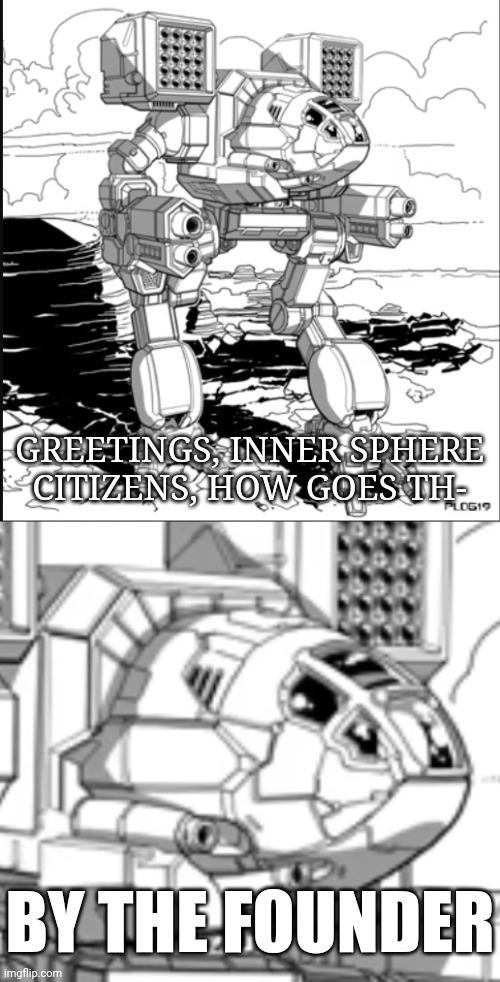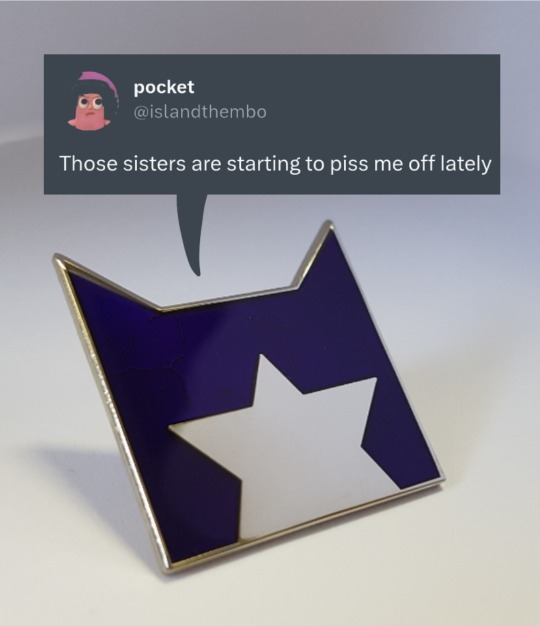#clans
Text
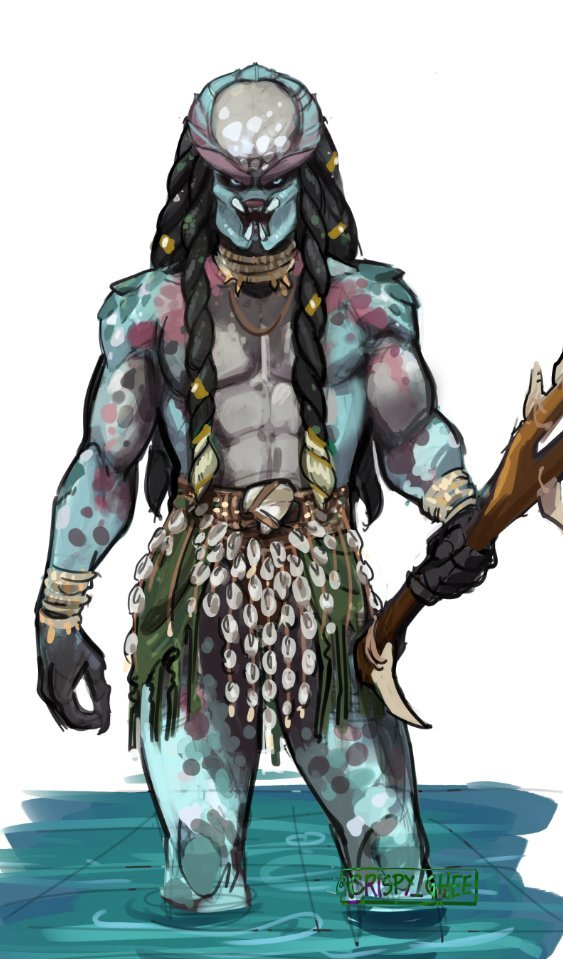
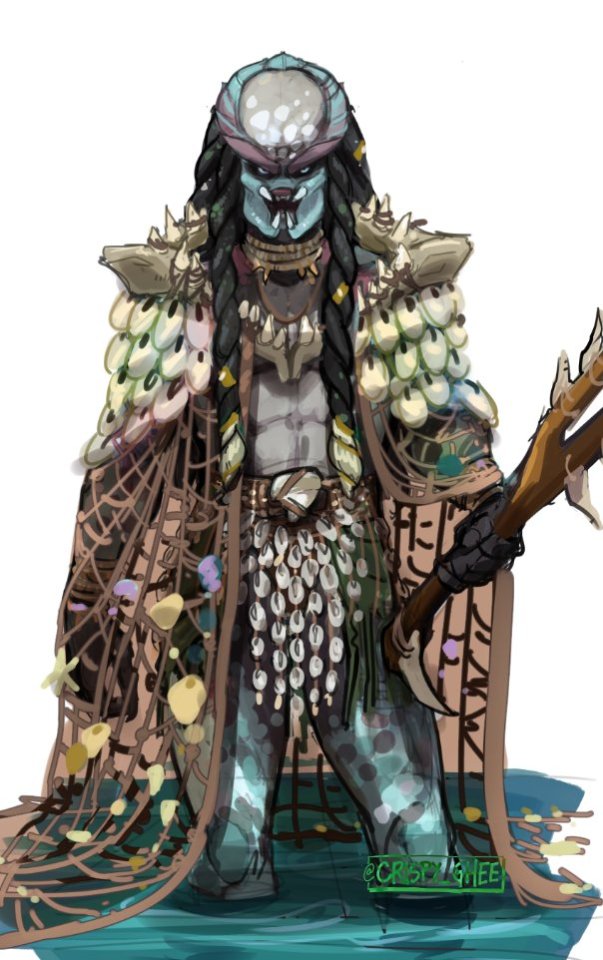
Bid'ha Leader Sriith
Hailing from the Northern Rivers of the Datlokh valley, Sriith is the youngest of the 3 Datlokh Clan Leaders.
Recently ascended after the death of the previous Bid'ha leader, Sriith gained his position thru a ritual feat of prowess where he outclassed other yautja, even more experienced ones. Prior to his ascension, he earned some respect as a successful Big Game Hunter (much like Ahisde, who he looks up to, though nowhere near as celebrated as Ahisde is), specializing in using beasts to aid in hunting. This includes not only the use of companion animals, but having a deep enough understanding of animal behaviors to exploit and manipulate them in the field. This has taught him patience, observation, strategy, and a certain level of "diplomacy" and teamwork. A useful arsenal for a Datlokh leader, in addition to decent physical ability.
As a leader he's "tough but fair," though his youth and an unspoken desire to prove himself sometimes leans him more towards "tough." Not too unreasonably though. Even if he seems more approachable than the other 2 leaders, he will not give away things for free.
Still has that very Bid'ha type of "vanity."
(The second designed Datlokh leader, after @isei-bleeds did Kirileg, the Ki'dto leader. Super sketchy, but you get the gist!)
1K notes
·
View notes
Text
❣️♀️Beloved Woman
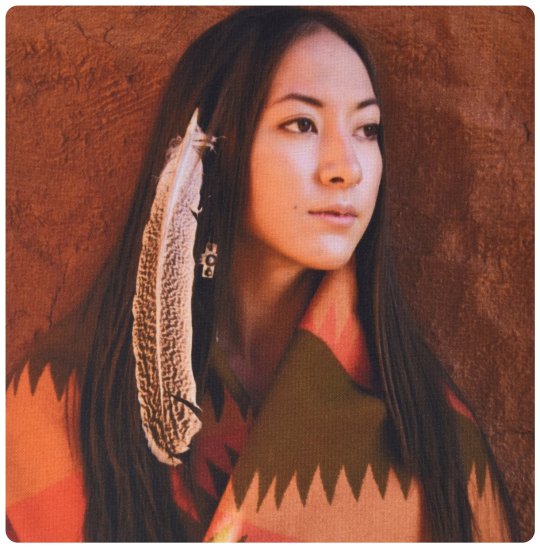
Cherokee Beloved Woman Nancy Ward
Nancy Ward, or Nan'yehi (nan yay hee), is the most famous Cherokee Beloved Woman. The role of Beloved Woman, Ghigau (Ghee gah oo), was the highest a Cherokee woman could aspire to. A Ghigau had a voice and vote in General Council, leadership of the Woman's Council, the honor of preparing and serving the ceremonial Black Drink, the duty of ambassador of peace-negotiator, and the right to save the life of a prisoner already condemned to execution.
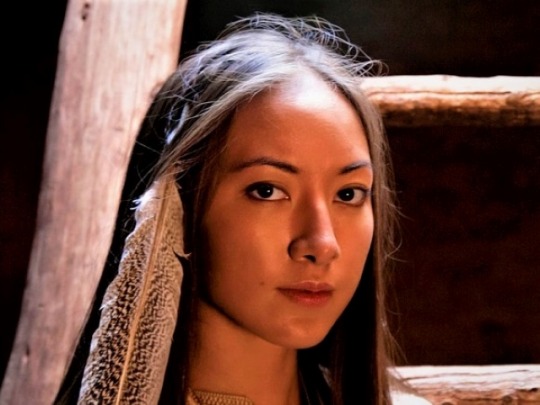
The Native American Cherokee
The word Cherokee is believed to have evolved from a Choctaw word meaning "Cave People." It was picked up and used by Europeans and eventually accepted and adopted by Cherokees. Traditionally, the people now known as Cherokee refer to themselves as aniyun-wiya, a name usually translated as "the Real People," sometimes "the Original People."
The Role of the Cherokee Woman
The Cherokee were matrilineal with a complex society structure. Clan kinship followed the mother's side of the family. The children grew up in the mother's house, and it was the duty of an uncle on the mother's side to teach the boys how to hunt, fish, and perform certain tribal duties. The women owned the houses and their furnishings. Marriages were carefully negotiated, but if a woman decided to divorce her spouse, she simply placed his belongings outside the house. Cherokee women also worked hard. They cared for the children, cooked, tended the house, tanned skins, wove baskets, and cultivated the fields. Men helped with some household chores like sewing, but they spent most of their time hunting.

Women in the Cherokee society were equal to men. This privilege led an Irishman named Adair who traded with the Cherokee from 1736-1743 to accuse the Cherokee of having a "petticoat government."
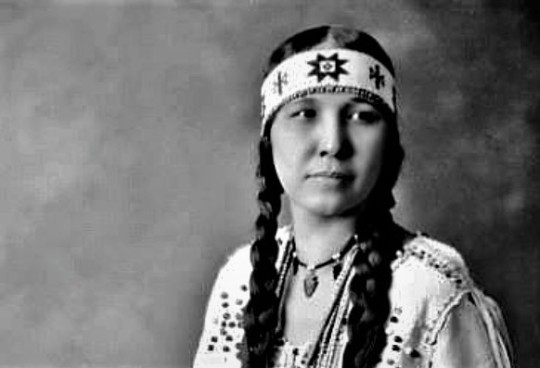
Princess Tsianina Red Feather
Tsianina Red Feather was not a "Princess." The Cherokee never had princesses. This is a concept based on European folktales and has no reality in Cherokee history and culture. Beloved women and high ranking women in a clan were treated with such reverence, that Europeans assumed they were some type of royalty.
Red Feather was born Florence Tsianina Evans on December 13,1882 in Eufallia (Oklahoma Territory) to Creek and Cherokee parents. All her 9 siblings were musical, but she was the one who stood out.
At age 14, she went to Denver to be trained to sing. There, she met the composer Charles Cadman and began touring with him at 16. She became a mezzo soprano virtuoso. While touring the United States, Canada, Paris and London, she wore native dress, braided her hair and wore a headband she beaded herself.

In 1918, she and Cadman debuted "Shanewis" (The Robin Woman) at the Metropolitan Opera; the cast received 22 curtain calls. Cadman based the opera on Native American stories told by Redfeather. Although this opera had many firsts, it became the first contemporary opera to be performed for a 2nd season at the Met.

The Robin Woman: Shanewis, 1918 - an opera in one act and two scenes by American composer Charles Cadman and Tsianina Redfeather Blackstone. Cadman called the work an "American opera."
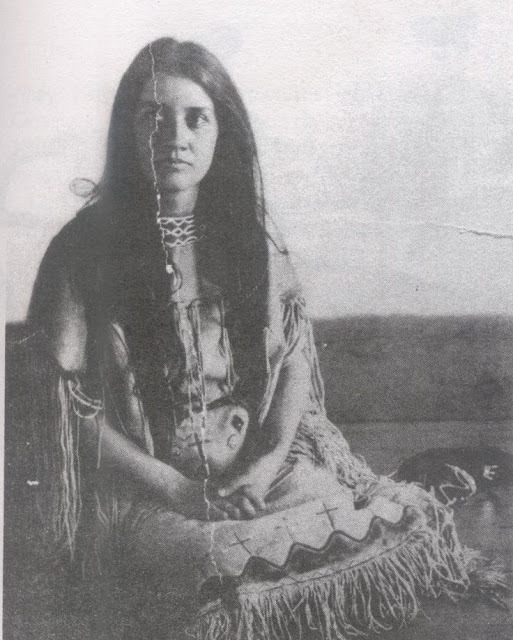
Photo is Miss Anna Trainor, who later became Mrs. Anna Bennett. She was only Cherokee on her mother's side, but because it was the woman's bloodlines that determined kinship, she was considered Cherokee.
The title Ghigau also translates to "War Woman," and Nan'yehi (Nancy Ward) earned the title by taking up her husband's gun when he was slain in a battle against the Creeks and leading her people to victory. Another War Woman, Cuhtahlatah, won honor during the American Revolutionary period by leading Cherokee warriors to victory after her husband fell. She later joined in a vigorous war dance carrying her tomahawk and gun.
It was important to the Cherokee that their losses be compensated with the same number of prisoners, scalps, or lives. Woman led in the execution of prisoners. It was their right and responsibility as mothers. Women had the right to claim prisoners as slaves, adopt them as kin, or condemn them to death "with the wave of a swan's wing."
In the Cherokee society your Clan was your family. Children belonged to the entire Clan, and when orphaned were simply taken into a different household. Marriage within the clan was strictly forbidden, or pain of death. Marriages were often short term, and there was no punishment for divorce or adultery. Cherokee women were free to marry traders, surveyors, and soldiers, as well as their own tribesmen.
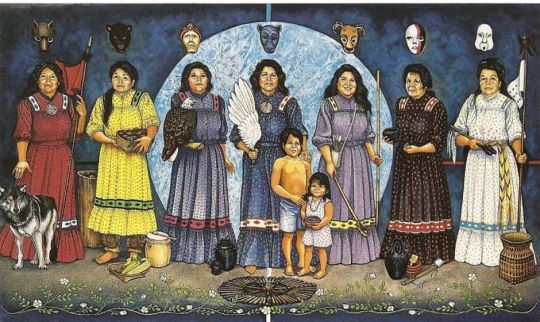
7 Cherokee Clans - L to R: 1.Wolf Clan 2.Long Hair Clan 3.Red Tail Hawk Clan 4.Blue Holly Clan 5.Deer Clan 6.Paint Clan 7.Wild Potato Clan
Cherokee girls learned by example how to be warriors and healers. They learned to weave baskets, tell stories, trade, and dance. They became mothers and wives, and learned their heritage. The Cherokee learned to adapt, and the women were the core of the Cherokee.
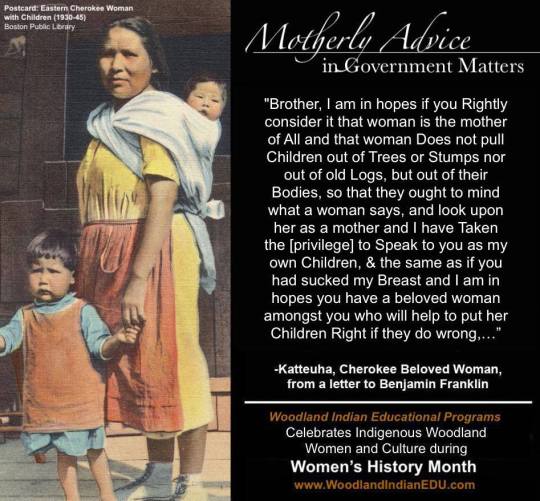
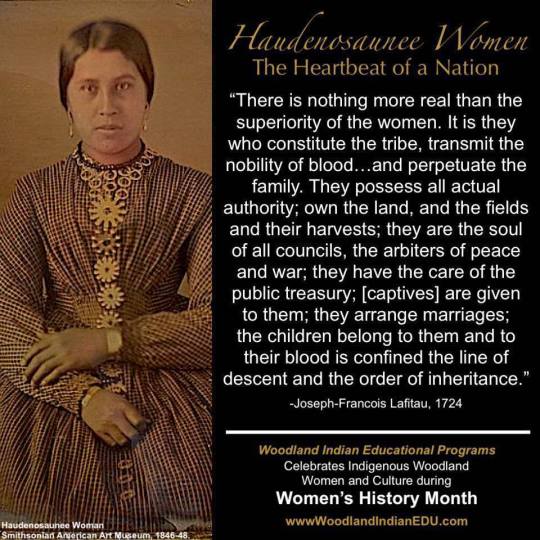
Other indigenous nations were were matrilineal. Women of the six nations Iroquois confederacy (Haudenosaunee) had a political voice on this land for at least 1,000 years.
The male chiefs who are the representatives of their clan in the confederacy of the Mohawk, Oneida, Onondaga, Cayuga, Seneca, and Tuscarora Nations are selected, held in office, and removed by women – the clan mothers. Founded on the shores of Onondaga Lake, this oldest continuing democracy in the world is based on a system of gender balance. The position of the chief is vested in the clan mother, who is the eyes and ears of the people, while the chief is her voice. Women were “the great power among the clan, as everywhere else,” Elizabeth Cady Stanton marveled. Lucretia Mott wrote about listening to “speeches of their chiefs, women as well as men” (clan mothers and chiefs) when she visited the Cattaraugus Seneca community during the summer of 1848 before Mott, with Stanton and Quaker friends, organized the Seneca Falls convention.
In other words, the Beloved and Haudenosaunee women influenced the Women's Suffrage Movement.
#original people#cherokee#native american#Beloved Woman#nancy ward#choctaw#Shanewis#clan#indigenous#women#katteuha#haudenosaunee woman#Iroquois confederacy#suffragette#women's suffrage#Elizabeth Cady Stanton#Lucretia Mott#Seneca Falls#clans#society#culture
227 notes
·
View notes
Photo

Johnston's Clan Map of the Scottish Highlands Circa 1965
314 notes
·
View notes
Text



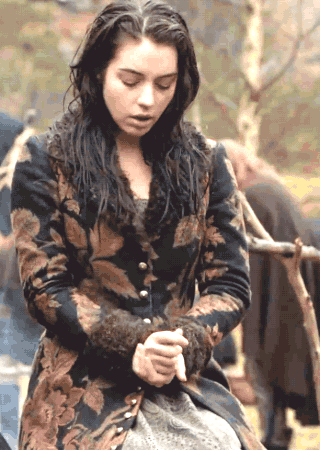


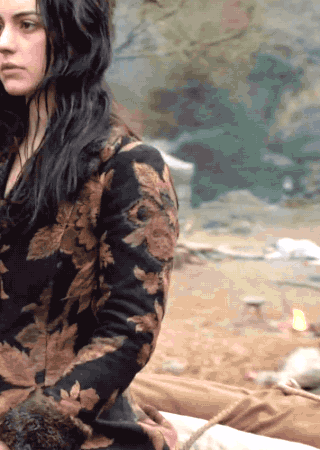

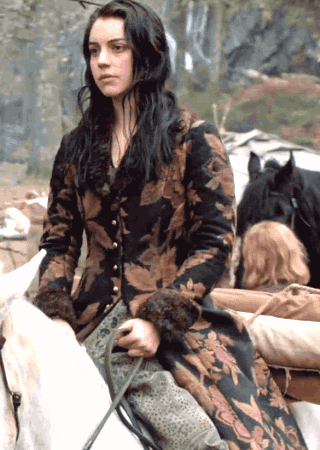
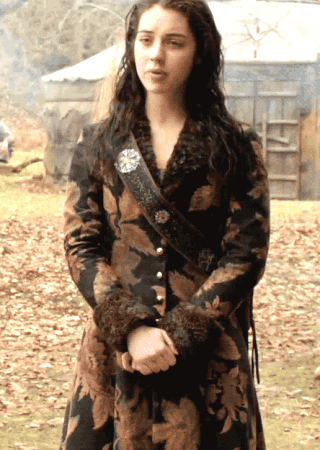


(Almost) Every Costume Per Episode + Mary Stuart's black cot with leafed print in 3x16,17
#Reign#Reign Edit#ReignEdit#weloveperioddrama#perioddramaedit#period drama#historical drama#Mary Stuart#Clans#Intruders#costumeedit#costumes#costume drama#Almost Every Costume Per Episode#Awkward-Sultana
124 notes
·
View notes
Text
Mandalorian tenets or the six actions.
Early Mandalorian culture, originating with the ancient Taung species, was believed to have begun as a religious warrior society, War was practiced as a form of ritual worship to their multiple gods and because of this, many of the Mandalorians' earliest conflicts were seen as holy wars and their warriors known as the Mandalorian Crusaders.
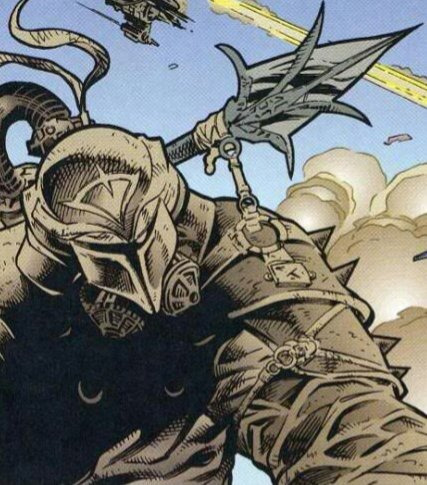

After the Great Sith war where most of the Taung had perished , the Mandalorians began accepting beings of other races and species into their culture and transforming what it meant to be a Mandalorian. Those who considered themselves Mandalorian were bound by a single, unifying culture rather than any one race, and they believed that an individual was defined by their actions rather than the circumstances of birth.
Resol'nare
Young Mandalorian children were taught a rhyme to help them learn the tenets of the Resol'nare (basic: six actions) These six tenets defined what it meant to be a Mandalorian, and any who wished to be considered as such was expected to follow them.
Ba'jur, beskar'gam, (Education and armor)
Ara'nov, aliit, (Self-defense, our tribe)
Mando'a bal Mand'alor — (Our language, our leader)
An vencuyan mhi. (All help us survive.)
This code is self-perpetuating and was directly responsible for ensuring the survival of the Mandalorian culture and society.
Wearing the armor (beskar'gam or ''iron skin'')
Once Mandalorians reach adulthood, they assemble a suit of armor that suits their needs and skills. It is both a tool and a symbol of their cultural identity. Aside from its defensive capabilities, armor served another function: in a group formed from so many different species, often times it was only the armor that displayed an outward sign of the culture that bound these individuals together. The paint scheme of a Mandalorian's armor occasionally represented a soldier's state of mind, or their personal mission.

As many soldiers preferred the inconspicuousness afforded by camouflage, Mandalorians believed in the saying:
"It's one thing to see us coming, it's another to do something about it."
Speaking the language (Mando'a)
While most Mandalorians know and speak Basic and other languages, all are raised speaking Mando'a, the language of the Taungs. When among themselves, they speak Mando'a almost exclusively. The language itself is very fluid and simple, reflecting the culture of which it is a part, and like the culture, it has changed very little over the centuries.
Mando'a was often thought of as easy to learn, a trait highly desirable in a culture that regularly adopted adults from numerous races and species. But there were difference speaker of Basic had to adjust, including Mando'a's expression of tense, and its gender-neutrality.
It was not unheard for Mandalorians to speak other languages such as Huttese and Basic alongside Mandalorian as it was necessary to communicate with others when working as a mercenary or bounty hunter.
Defending oneself and the family
While the Mandalorians are best known as a warrior culture, they are also strongly family oriented. Each member of a family is expected to protect the others, garaunteeing their survival and through this, ensuring the survival of the clan and culture.
Adoption was extremely common in Mandalorian culture, to the point where even adults could be adopted. Because of the Mandalorians' constant connection to war, widows and orphans became an inescapable fact of life.

Contribute to clans welfare
Each individual and family is expected to contribute to the welfare and prosperity of their clan, which in turn helps provide for the family and individual as needed. This act is far from the socialist prop it first seems, as it is a neccessity for a society that spends a great deal of its time at war to provide for such neccessities as food, shelter and manufactured goods when a large number of a clan's adults are on other worlds fighting.
Raise children as Mandalorians
It is a Mandalorian's responsibility to raise children in the traditions of their culture. However this is not simply an imperative to breed, as it might seem on the surface. Mandalorians often adopt their children, caring very little for blood lineage and bowing to the neccessities created by their lifestyles as nomadic warriors. This act is a mandate to perpetuate the culture, as are the majority of the Six Acts, by passing it down to both offspring and adopted war orphans.
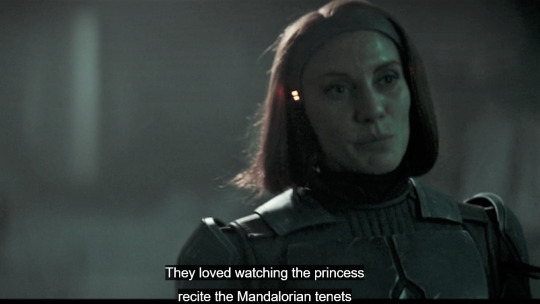
Rally to the cause of the Mand’alor
While the social structure of the Mandalorians is very simple, revolving around family and clan, each clan and family answering to itself, in times of war all families and clans are expected to answer a call to war by the Mand'alor, the leader of the Mandalorian people.
The old and the new way.
In order to retain their heritage in the face of outside influence, Mandalorians placed a high value on rigorously carrying out the Resol'nare's tenets in a daily manner. However, interpretation of the Resol'nare differed, and at least one group of Mandalorians, the New Mandalorians, potentially followed an alternate interpretation of the Resol'nare by doing away with personally-owned sets of armor and refusing to aid the Mand'alor.

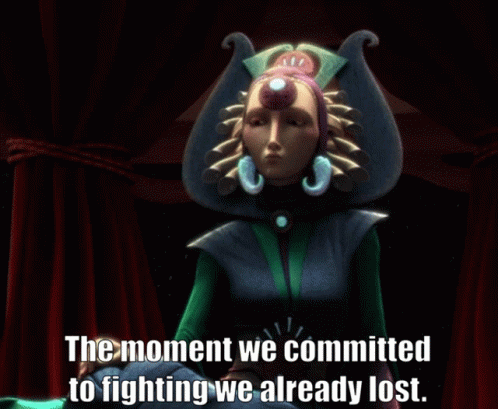
The New Mandalorians was the pacifist movement who placed great importance on the virtues of pacifism, neutrality, and nonviolence rather than martial prowess and military strength as the Old Mandalorians did. They were led by a Duchess of Mandalore up until its dissolution following the coup in 19 BBY.
Similar to Death Watch, the Old Mandalorians were exiled from Mandalore, but unlike their Death Watch counterparts, did not seek vengeance on the New Mandalorians. Instead, the Old Mandalorians resettled in other parts of the galaxy and worked for the highest bidder, maintaining their Mandalorian warrior heritage as bounty hunters, mercenaries and other professions.
"Here's why you can't exterminate us, aruetii. We're not huddled in one place—we span the galaxy. We need no lords or leaders—so you can't destroy our command. We can live without technology—so we can fight with our bare hands. We have no species or bloodline—so we can rebuild our ranks with others who want to join us. We're more than just a people or an army, aruetii. We're a culture. We're an idea. And you can't kill ideas—but we can certainly kill you."
― Mandalore the Destroyer
#the mandalorian#mandalorians#mandalorian culture#mandalorian armor#foundlings#the old way#new mandalorians#satine kryze#mando'a#star wars#legends#mandalorian tenets#six actions#clans
187 notes
·
View notes
Text

Got a bit of a rag tag group of reinforcements for my growing Rasalhague Dominion cluster! About half of these are mechs I actually intend to use in games (as previously mentioned the Horned Owl is a favorite design archetype of mine, the Summoner is about as idiot-proof a heavy cav omni as you can make, and the Piranha is cheap fill with a heinous close-range bite) but the Hellbringer, Huntsman, and Mist Lynx feel a bit more awkward to me. Idk they'll probably take to the table at some point
#hobby#miniatures#mini painting#battletech#battlemech#mech#mecha#mechwarrior#big stompy robot#clans#rasalhague dominion#clan ghost bear#light mech#medium mech#heavy mech#mist linx#piranha#horned owl#huntsman#hellbringer#summoner#fun fact i bought the pirahna off another local guy#he got one from a star box#and a full three from salvage blind boxes
80 notes
·
View notes
Text

everyone meet HOPS!
24 notes
·
View notes
Note
hi! I'm a big fan of your translations, thanks for sharing! I was wondering if you've ever done your own translations/interpretations of the names of the characters in mdzs?
hi!! ahh thank you! yes, I do have a (wip) post with my translations of character titles (eg cssr) and proper nouns in mdzs here! and I actually have been meaning to post an analysis of the mdzs surnames for a long time, so I'll use this ask to do so! thank you for reminding me!!
note: the characters are in traditional chinese :)
魏 Wei
this one is pretty self-explanatory for anyone who can read chinese. on the right is a 鬼 gui radical, which means ghost! for our lil 鬼道之王 king of the ghost path <3
(this radical also appears in a lot of words for "soul," such as 魂魄)
藍 Lan
I've often seen people simply say 藍 lan means "blue," and that wouldn't be wrong but it also wouldn't be completely correct. similar to how wwx clarifies that the 義 yi of 義城 yi city is not that of 俠義 heroic justice, but that of 義莊 coffin home, the in-universe definition from chapter 18 is that the lan surname is derived from 伽藍 qielan, which is a loan word from sanskrit, “saṃgharāma,” meaning buddhist monastery.
溫 Wen
溫 wen means temperature, warm. the wens do love their sun. pretty straightforward!
金 Jin
also straightforward. the jins are rich and opulent, and 金 jin means gold!
聶 Nie
here's where things get interesting. this is the one that made me think more about the surnames, and the reason why they're written in traditional here. I had always read nhs's name in simplified (聂) but when I saw it in traditional (聶), it clicked.
not only does 聶 nie mean "to whisper," but nhs has three 耳 ears in his name!!
AND INDEED, NHS HAS EARS EVERYWHERE, AND HE IS ALWAYS LISTENING. 👂👂👂
江 Jiang
this one I had to think about for a bit. of course, there's the most direct answer, which is that 江 jiang means river—and the jiang's are, of course, well known for their lotus pier and rivers and such. but a more interesting thought that occurred to me was that 江 may be a reference to 江湖 jianghu, aka rogue martial artist communities who aren't affiliated with mainstream society often seen in wuxia fantasy novels. those part of the jianghu do not adhere to government/law, but rather live under individual moral codes of conduct re righteousness, justice, vengeance, etc. quoting jeannette ng's essay on wuxia:
In Stateless Subjects: Chinese Martial Arts History and Postcolonial History, Petrus Liu translates jianghu as “stateless”, which further emphasizes that the hero’s rejection of and by the machineries of government. Jianghu is thus a world that rejects the dictates of the state in favor of divine virtue and reason, but also of a sense of self created through clan and community.
the jiang family precepts and ideals seem v aligned with this aspect of jianghu morality—after all, jc never lets us (or himself) forget that wwx's acts of vigilante heroism are those of an ideal jiang.
Bonus: 莫 Mo
mo xuanyu was only ever a blank canvas. 莫 mo means nothing, no one, none. </3
#also fun fact when I was looking up nie#I found out the guy who wrote the chinese national anthem is named 聶耳 nie er#he not only has 4 (FOUR!) ears in his name but his FIRST NAME IS LITERALLY JUST EAR#truly living up to his name. his parents must be so proud#anyway thanks for the ask anon this was fun!#ask box#anon#mdzs#mdzs meta#clans#surnames
193 notes
·
View notes
Photo

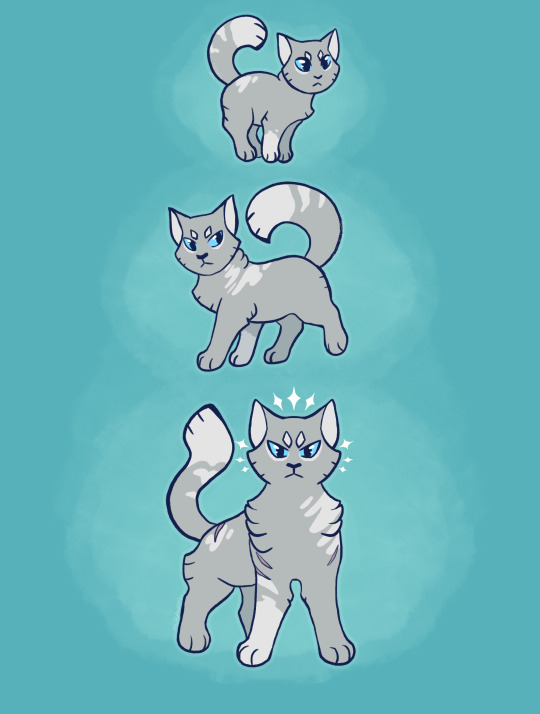
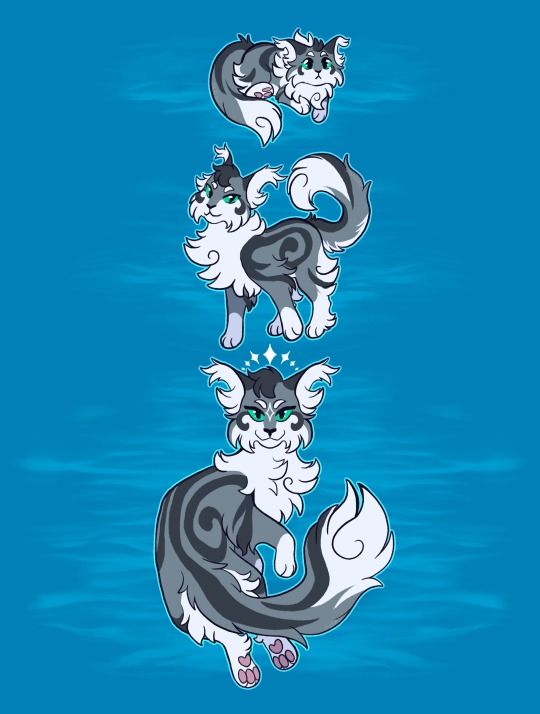
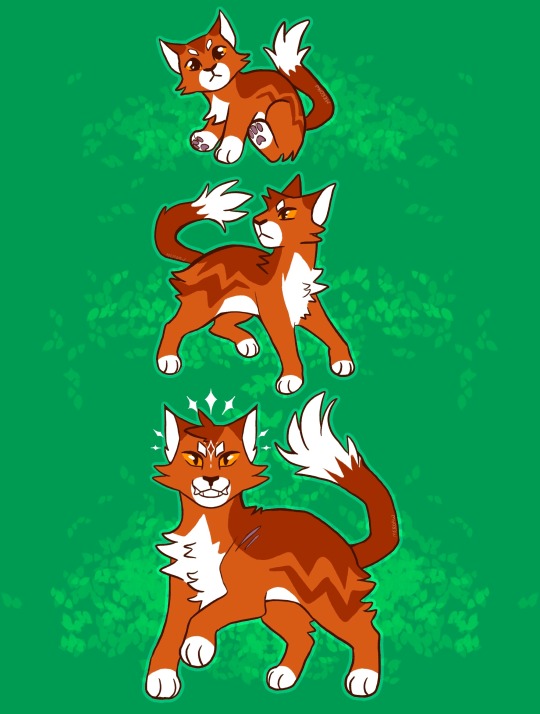

designs for the founders, these come as super long charms on my etsy
#meroaw warriors designs#meroaw warriors#digital art#wc#warriors#warrior cats#tall shadow#clear sky#thunder#river ripple#wind runner#star clan#clans#dawn of the clans#etsy seller#fanart#cat#cats#design#designs
266 notes
·
View notes
Photo

Japanese clan domains during the Sengoku Period, ~1580.
296 notes
·
View notes
Photo

#Ice Cream Names#Guilds#Factions#Clans#Collectible Card Games#TCG#Magic: The Gathering#MTG#Cardboard Crack
255 notes
·
View notes
Text




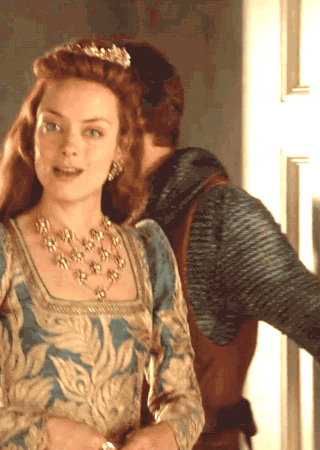



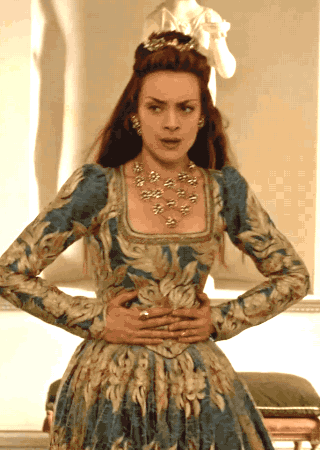

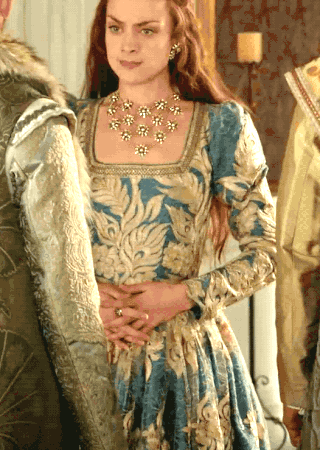

(Almost) Every Costume Per Episode + Elizabeth Tudor's light blue gown with gold embroidery in 3x16
#Reign#Reign Edit#ReignEdit#weloveperioddrama#perioddramaedit#period drama#historical drama#Elizabeth Tudor#Clans#costumeedit#costumes#costume drama#Almost Every Costume Per Episode#Awkward-Sultana
88 notes
·
View notes
